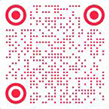 Antonius Richard RAD+AR
Antonius Richard RAD+AR
城市:Indonesia
公司:Antonius Richard RAD+AR
参赛作品: Aruma Split Garden
空间类型:民宿
个人/公司简介:
RAD+ar (pronounced RADAR) is Indonesian based group of architects, designers, and thinkers operating within the
field of architecture, urbanism, research and development – which focus to bring the idea of Architecture as an art of
utilizing space in most provocative to utopian-research based approach.
Formed from the curiosity of the advancement of Tropical Architecture by Antonius Richard Rusli, RAD+ar believes that
in order to shape a better and more sustainable version of today’s challenges, architecture can profitably be one of the
most worth-exploring field.
RAD+ar explores and experiments to redefine the value of architecture in both globalization and localization. Beyond
spaces and building, it connects history, narrative of cultures, expanding beyond limits of what we call architecture.
Collaboration of multidisciplinary at each portfolio through systematic integration, allow RAD+ar to always innovate and
experiments.
设计说明 | Design Instruction
Aruma Split Garden
In the challenge of rising land values, the Split garden was created as a study of how split-level design can evolve,
creating distinct zones within a compound of multiple tenants while incorporating nature within the built environment in
a relatively compact footprint. The iteration of the design reflects RAD+ar's search for significance and evolving roles in
optimizing circulation.
The design incorporates elements such as roofs, facades, walls, diagonal cantilevered structures, and furniture
elements, all in a contemporary design that blends with the tropical surroundings of the commercial area. Integration
elements like natural light, greenery, views of nature, natural materials, and other sensory experiences are incorporated
into the buildings and spaces.
The design of the building was oriented north-south to preserve the existing greenery in the rear garden. This design
approach aimed to expand the spatial experience by creating a wind tunnel that connects the two giant trees at both
ends. However, this situation posed a challenge in optimizing the multi-level commercial spaces without sacrificing any
greenery.
To address this challenge, the structural elements were integrated into the spatial planning of the design. This allowed
for a seamless transition from the front garden, diagonally creating a loop connection for three tenants: restaurants on
the ground floor, a bar in the mezzanine space, and a beer garden in between spaces extended to the rooftop. This
integration of different spatial experiences and characters within the development ensured a cohesive design.
In addition, gardens were appreciating between spaces to ensure smooth and seamless connections between different
materials and components. This not only created a visually pleasing design but also enhanced the overall user
experience.
To optimize the structural design, the goal was to minimize material usage and energy consumption. This was achieved
by carefully considering the load-beari



 Antonius Richard RAD+AR
Antonius Richard RAD+AR





 金腾奖视频号
金腾奖小红书号
金腾奖视频号
金腾奖小红书号

 监制:刘译遥
监制:刘译遥